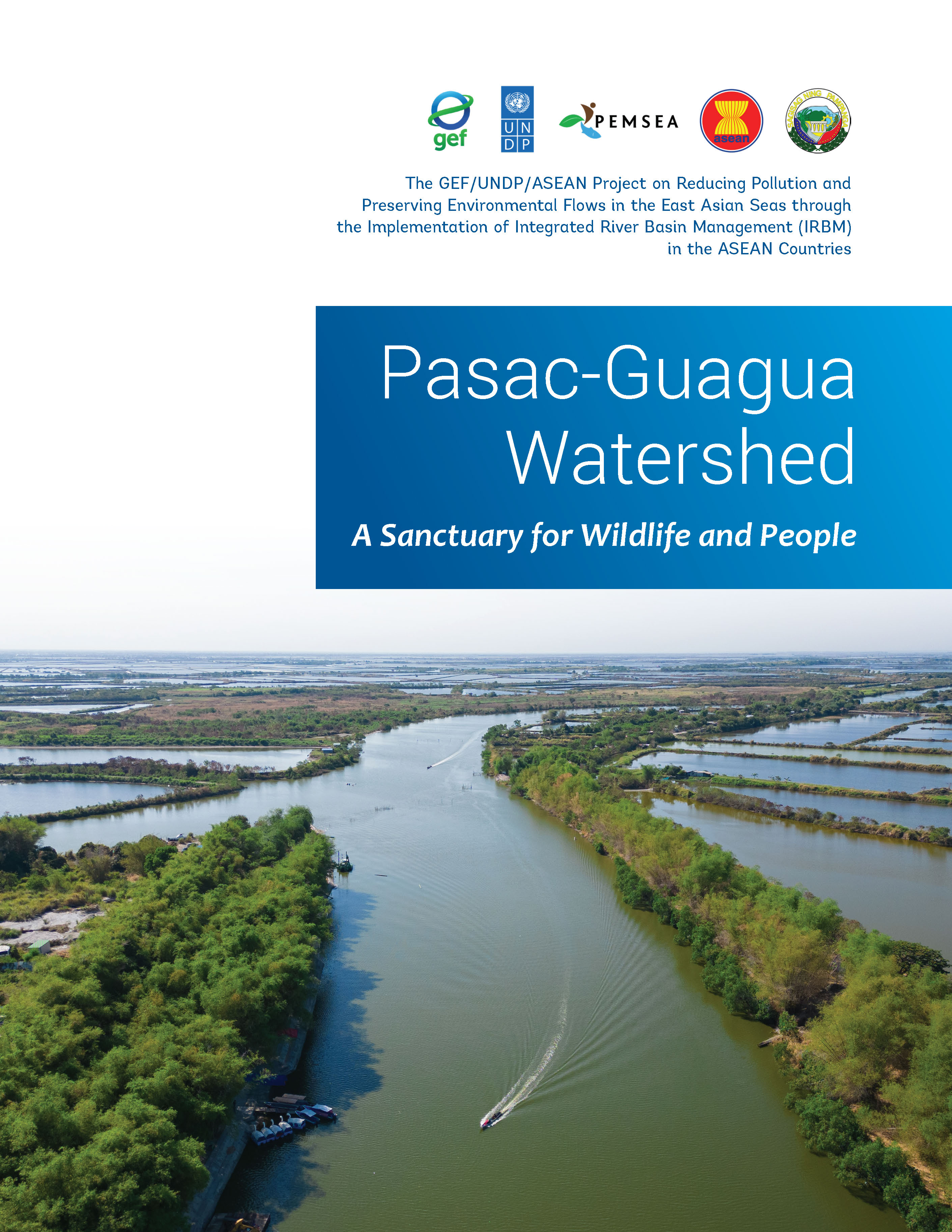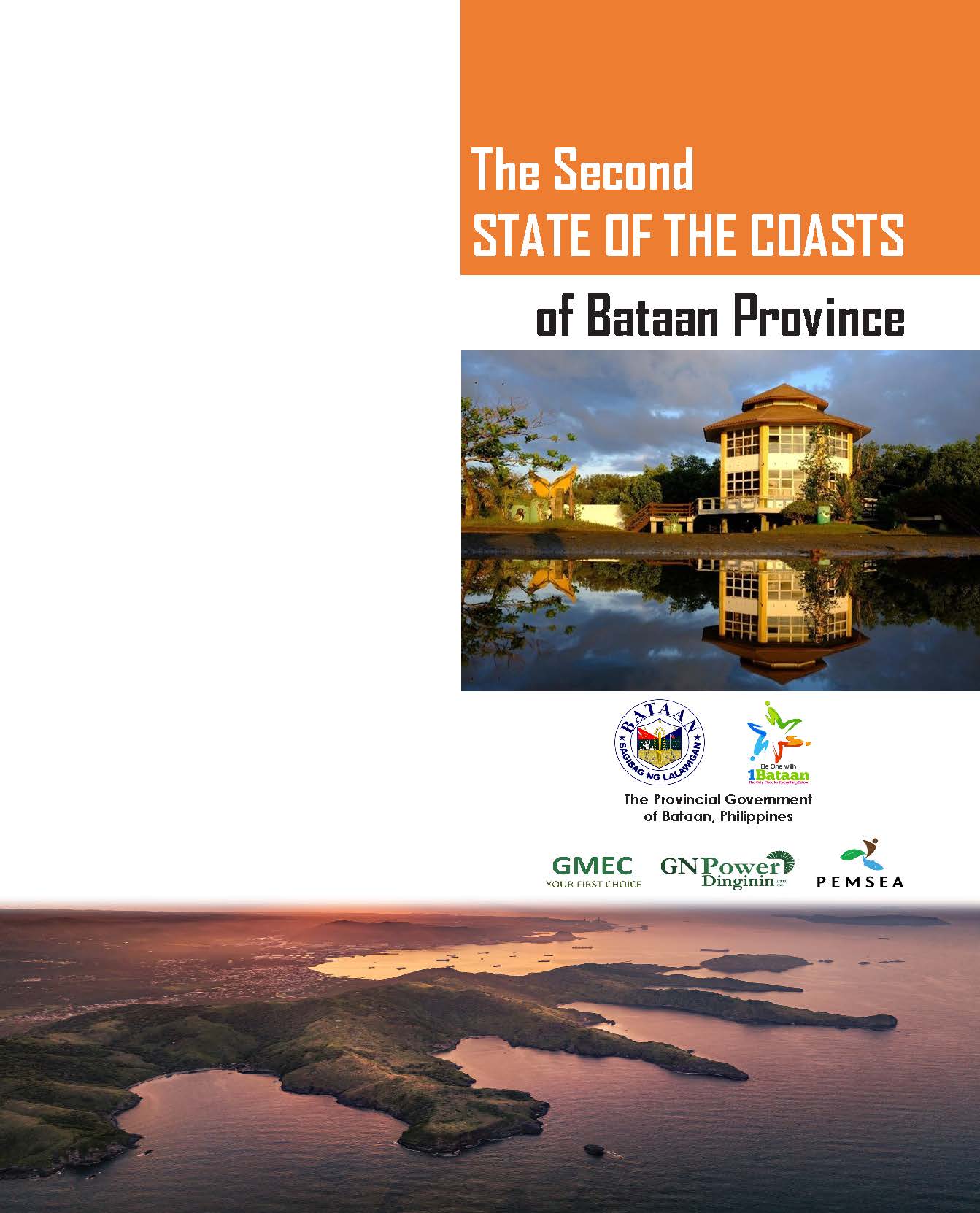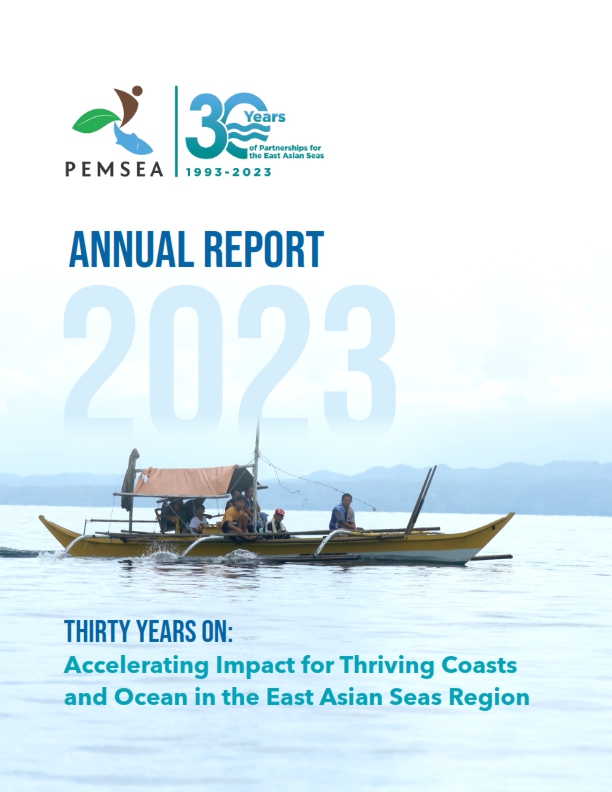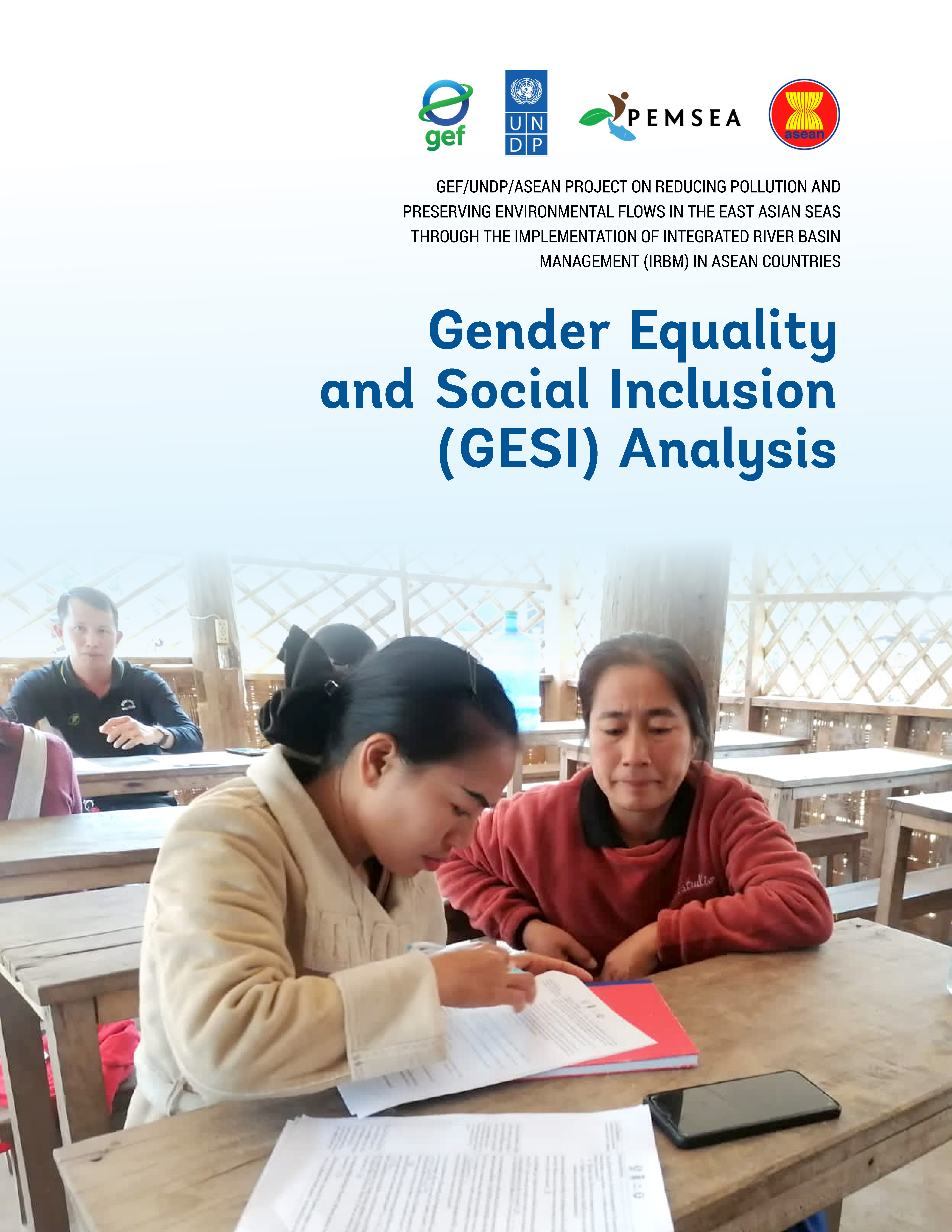
Breadcrumb
EASC2024 Congress Report
The East Asian Seas Congress 2024, in collaboration with the World Ocean Week in Xiamen, convened in Xiamen, China from November 6-8, bringing together 855 delegates from 20 countries. Under the theme "Blue Synergy for a Shared Future: One Sustainable and Resilient Ocean," the Congress resulted in the signing of the Xiamen Ministerial Declaration, renewed partnerships, and strengthened commitments for sustainable ocean management in the East Asian region.
The Guidebook on the State of the River Basin (SORB) Reporting System
The Guidebook on the State of the River Basin (SORB) Reporting System is intended for local governments and/or river basinorganizations in the East Asian Seas region currently or planning to implement integrated river basin management (IRBM)/integratedwater resources management (IWRM) programs. It provides guidance in establishing a regular monitoring, evaluation (M&E) and reporting mechanism, and discusses the requirements, the basis and importance of implementing and sustaining the SORB reporting system.
IRBM Stories - Pasac-Guagua Watershed: A Sanctuary for Wildlife and People
Located in the central region of northern Philippines, the Pasac -Guagua Watershed is a critical source of water and livelihood that supports 152 villages within the watershed. It is one of the major river systems that drain to Manila Bay, considered the main harbor of the country that is connected to a larger marine ecosystem, that is, the South China Sea.
The Pasac-Guagua Watershed is also a biodiversity haven where a portion of it is an important migratory path for water birds. The protection and sustainable management of the watershed is essential not only for the communities and wildlife thriving in the area for coastal and marine ecosystems connected to the river.
Assessing the supply side of blue carbon in ICM and other local sites in the East Asian Seas region
The report provides an overview of the status and management of Blue Carbon Ecosystems (BCEs) in the East Asia Seas (EAS) region, which includes crucial habitats like mangrove forests, seagrass meadows, salt marshes, seaweed beds, and tidal flats. These ecosystems are key for carbon sequestration, climate regulation, and coastal resilience but are increasingly threatened by human activities such as coastal development and pollution. The study aims to evaluate the status of BCEs in Integrated Coastal Management and other local sites in the region, assess current management practices, and explore the interest in expanding Blue Carbon (BC) programs. A survey conducted across 20 sites in six countries, along with additional data from State of Oceans and Coasts reports, reveals the significant ecological and economic value of BCEs, while also highlighting persistent management challenges. The findings show a strong interest in BC initiatives, particularly in BCE restoration and conservation, and emphasize the need for improved data collection on less-represented BCEs. The report suggests that integrating these findings with market demand assessments will be crucial for developing effective BC programs and supporting sustainable practices in the EAS region.
Second State of the Coasts Report of Bataan Province
The implementation of the Integrated Coastal Management (ICM) program commenced in the Province of Bataan in 2000. The first State of the Coasts (SOC) Report was published in 2017, covering the period 2000-2015. The report provided a baseline for evaluating the impacts of management interventions and solutions to issues related to the socioeconomic and environmental status of Bataan.
The Second SOC Report, covered the period 2017-2022, and identified discernible trends and changes taking place in the coastal areas of the province as a result of the implemented policies and programs, projects, and activities (PPAs) to respond to governance and sustainable development aspect issues. This Report is the consolidated output of the collaborative efforts of the provincial government, city and municipal governments, national government agencies (NGAs), the private sector, and academe.PEMSEA Annual Report 2023: Thirty Years On: Accelerating Impact for Thriving Coasts and Ocean in the East Asian Seas Region
Thirty years of inclusive sustainable development work in the coastal and marine areas of the East Asian Seas region have brought significant benefits and lasting impacts to PEMSEA partners and communities. The Annual Report 2023 brings you the stories and milestones of the Partnerships, commemorating the thirty years of Partnerships, and looks ahead to a new decade of inclusive and sustainable ocean governance in the East Asian Seas region.
IRBM: GESI Analysis Report
Envisioned to guide in mainstreaming gender equality and social inclusion (GESI) in IRBM Project implementation, the report provides information and perspectives on the GESI context (or gender and social similarities and differences) in the participating river basins in the ASEAN region, including the gendered impact of development challenges such as water scarcity and pollution, waste management, disasters, climate change, etc. as experienced by women, men and vulnerable populations living in and around the project sites. The report also suggests ways forward to enhance and mainstream GESI into work plans and budgets at the river basin level, a process that will be supported by the project.
Biofouling Management in the Seas of East Asia Regional Action Plan
The challenges posed by biofouling require responses at local, national, and regional levels. The link to international shipping is crucially important, especially so in East Asia, which is already the global hotspot for shipping despite continuing advances in its economies. During the regional meeting of the GloFouling Partnerships Project in September 2023, the Regional Action Plan on Biofouling Management was approved as a response to the need.
IRBM Stories - Kampong Bay River Basin: The Lifeline of Kampot Province
Kampong Bay River Basin is one of the largest coastal river systems that supports over 184,000 people in the southern region of Cambodia. Today, rapid coastal and riverbank developments and the increasing water usage endanger the critical source of water in Kampot Province.
The Government of the Kingdom of Cambodia, through the Ministry of Environment, is working together with PEMSEA, UNDP in Asia and the Pacific, Global Environment Facility, and ASEAN to arrest the rapid decline of water quality in Kampong Bay.








